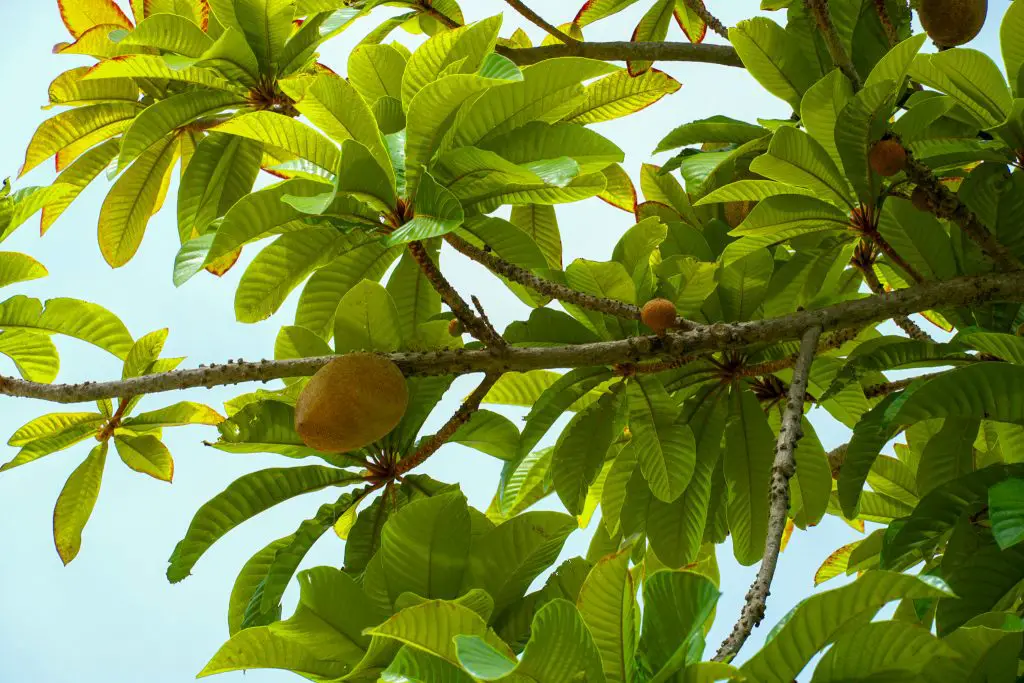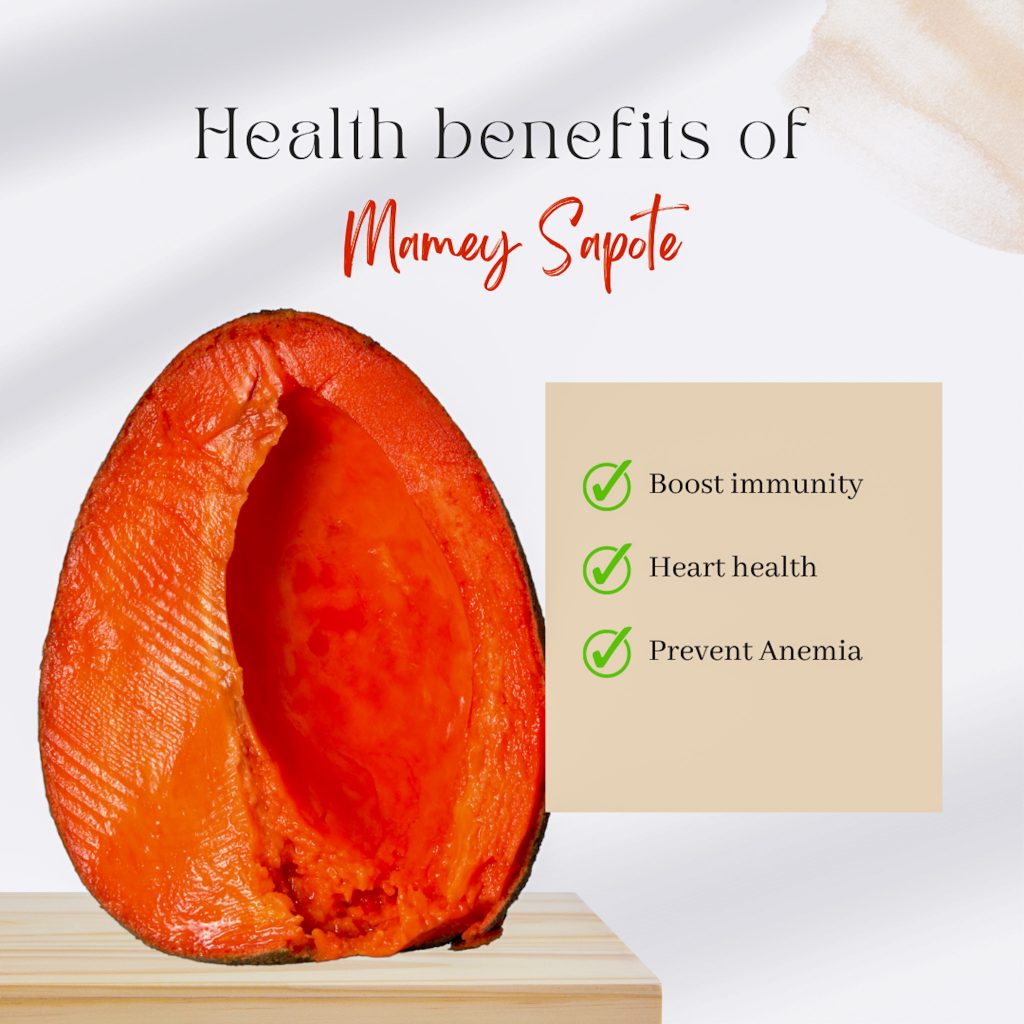Mamey sapote is a very popular fruit in Latin America. It is native to both Central and South America but is also grown in the southern part of Florida and throughout the Caribbean. Chances are, that you may have even come across one of these fruits while in your local grocery store, and didn’t even know what it was.

The fruit itself is very similar to the avocado. Just like the avocado, it has an extremely creamy texture. However, unlike avocado, it is sweeter and has the creaminess of a cooked yam. Depending on where it is grown, there may also be a slight hint of pumpkin, apricot, or peach flavors as well.
What Is the National Fruit of Cuba?

While there are many great-tasting fruits found in Cuba, only one is the national fruit. And while Cubans love plantains, avocado and tamarind, the national fruit of the country is the mamey sapote, and for good reason too. While it may not be the best-looking fruit in the country, it sure tastes good.
What Does Mamey Taste Like?
Mamey sapote is a tropical fruit, and can often be found in the produce section of grocery stores where there is a higher concentration of Latinos. Chances are, you have probably seen the fruit at your local grocer, and had no idea what it was. You may have even passed it by simply because you did not know what it tasted like.

While traditionally grown in Central and South America, it can be grown in southern Florida. The fruit itself varies in size, but is generally about the same size as an avocado, with a shape similar to that of a mango. It is an extremely rich-tasting melon that has high fiber content, and plenty of vitamin B. Unlike avocados, mamey sapote grows on taller trees, similar to that of a mango.

For someone who has never tried a mamey sapote in the past, describing what it tastes like and its texture can be a little difficult. As the fruit ripens, the thin, rough, light brown skin, peels off easily exposing a pinkish fruit underneath. When grown in Florida, the meat is a lighter color, however, due to the richer, iron-rich soils of Cuba, native mamey sapote is a deeper red.
The texture of the mamey sapote is similar to that of an extra-ripe avocado, in that it is smooth and creamy. In fact, it’s easy to cut through the flesh with a spoon. Similar to that of sweet potato, the meat also has a slight graininess texture to it. But, the flesh of the fruit is much sweeter, often resembling a mixture of flavors which include brown sugar, cantaloupe, honey, and pumpkin.

At the center of the Mamey sapote is a black pit that should not be consumed due to its cyanide content. In Latin America, the seeds are treated for toxins, making them safer to consume. In fact, it is rumored that when boiled in water, the black pit produces hallucinogenic effects if consumed.
When Is Mamey Fruit Ripe?
Different fruit have different ways of showing that they are ripe. A banana for example will turn from green to yellow when it is ripe. A plantain on the other hand will generally turn from yellow to a brownish-black color once it has ripened. Unlike bananas and plantains, mamey sapote must be squeezed to determine whether it has ripened enough to consume.
When purchasing mamey sapote, you must slightly press into the flesh with the fingers, to determine whether it is ready to be consumed. Before it has fully ripened, the fruit itself will be hard as a rock. However, after it has fully ripened, it begins to get extremely soft. Mamey sapote is best consumed between these 2 ranges.

Pay close attention to the fruit when purchasing, to ensure that it still has a crown. When the fruit itself is harvested, it is cut from the tree leaving a nubby stem at the crown. As the fruit ages, there’s a greater chance of this crown falling off, which can dry out the mamey sapote causing it to spoil. If you have no other option but to purchase the fruit still firm, then simply place it in an unrefrigerated location for several days until it gets softer.
Is Mamey Fruit Good for You? – Is it a superfood?
Most people, when they think about fruit, they think about how healthy the fruit is. So naturally, when it comes to mamey sapote, most people want to know just how good is it.

Like most natural tropical fruits, the flesh of the mamey sapote is an excellent source of potassium and manganese. It is also high in dietary fiber. And more importantly, has plenty of vitamins such as C, E, and vitamin B6 complex. The color of the flesh is the result of carotenoids, which are known to help protect you from various types of cancers.
High Fiber Content
Every cup of mamey sapote contains 56 grams of carbohydrates. It also contains as much as 9 grams of dietary fiber. This fiber is very important to help regulate the body’s digestive system. It does this by helping to soften the stool and increase the frequency of bowel movements.
Rich in Carotenoids
The chemical within the fruit that provides its rich oranges color, is known as carotenoids. These are known for their antioxidant properties, which when consumed will help to prevent damage to cells. There are several different types of carotenoids including alpha-carotene, lycopene, beta-carotene, as well as zeaxanthin.

Rich in Iron
The flesh of the mamey sapote is also rich in iron. As a result, it is perfect for the prevention and control of anemia. Women who are pregnant should consume the fruit regularly, to help increase the production of red blood cells.
Rich in Nutrients
And, when it comes to nutrients, mamey sapote is chocked full of them. You will find plenty of niacin, magnesium, copper, and potassium, as well as magnesium. It also has plenty of riboflavin, vitamin C, vitamin A, as well as vitamin E.
How Is Mamey Fruit Used in Cuba?
In Cuba, the fruit of the mamey sapote has many great uses. Not only is it great for desserts, but also has herbal properties that improve digestion, help the skin heal, prevent anemia, as well as improve the health of the heart and the immune system.
It’s Used in Desserts
Due to its rich creamy texture, and sweet flavor, ripe mamey sapote is most commonly used in desserts. Because the flesh of the fruit is very soft when ripe, you can literally cut right into it with a spoon.

Its creaminess makes it an excellent choice for use in a smoothie, which can be drunk, or frozen into fruit bars or sticks known as paletas. As a result, it is very popular to see both ice cream as well as frozen creamsicles made from the mamey sapote fruit throughout Cuba.
Mamey Is Used to Improve Digestion

The flesh of the fruit is extremely high in dietary fiber. Regular consumption of mamey sapote can help improve bowel movements and frequency. At the same time, it will help to protect against hemorrhoids and diverticulitis. It’s not uncommon in Cuba for locals to consume the flesh of the fruit in order to improve digestion.
Mamey Is Used to Keep the Skin Healthy

Like avocados, mamey sapote is also excellent for the skin. The high levels of vitamin C are known to stimulate the creation of collagen, which helps to slow the signs of aging. Vitamin E is an important micronutrient that functions as an antioxidant. And vitamin E is known for its wound-healing capabilities. Because of this, the fruit is commonly used as a beauty treatment.
Mamey Is Used to Prevent Anemia
Without a question, the high levels of iron in the mamey sapote fruit, are perfect for preventing anemia. Just about everything the body needs to increase the production of red blood cells is contained within the flesh of the fruit. This is why so many pregnant women often consume the mamey sapote as part of their regular diet.
Mamey Is Used to Improve Heart Health
When it comes to having a healthy heart, the body needs plenty of fiber, antioxidants, and potassium. The high fiber content in the mamey sapote fruit is perfect for reducing cholesterol. Potassium is great at preventing heart disease and lowering blood pressure. The antioxidants are amazing at reducing inflammation and preventing heart disease from occurring. The fruit when consumed regularly will help to improve the overall health of the heart.

Mamey Is Used to Improve Immunity
The most important vitamin that the body needs when it comes to enhancing the body’s immune system, is vitamin C. Vitamin C is known for reducing inflammation, promoting immune cell production, neutralizing free radicals, and strengthening the digestive tract. Regular intake of high levels of vitamin C, such as those contained within the flesh of the mamey sapote, will help the body fight off the common cold as well as a number of different respiratory infections.
Final Thoughts
According to Mameygrove.com when referring to mamey sapote, “It was this fruit that kept [conquistador Hernando] Cortez and his army alive on their famous march from Mexico to Honduras.”
So, the next time you encounter mamey at the grocery store or farmers market, don’t be reluctant to buy some to take home because it has incredible health benefits whether you eat it or use it as a face scrub.

Explore the Essence of Cuban Cuisine with Noelle – a devoted culinary enthusiast enamored by Cuban flavors for over 30 years. Guided by her husband’s mami and abuela, she refined her skills using the ‘by eye’ technique, converting cherished recipes into precise culinary treasures. Continuously enriching her expertise, Noelle actively engages in cooking classes, infusing her platform with measured recipes and an authentic taste of Cuban food, inviting the world to savor the essence of this vibrant cuisine.







